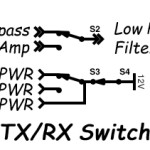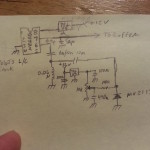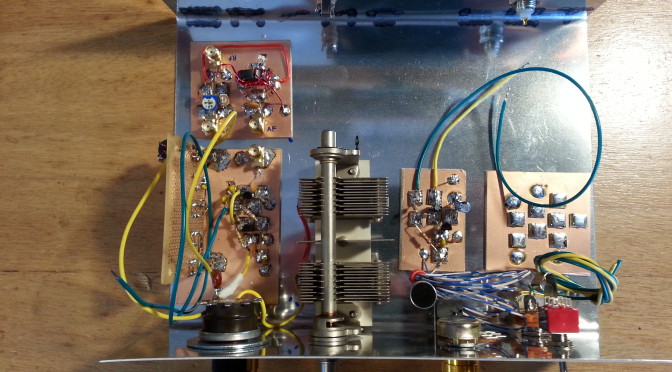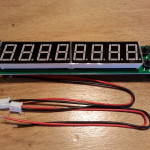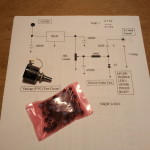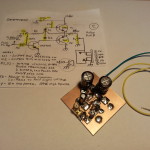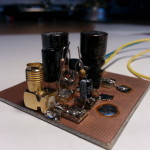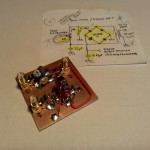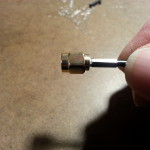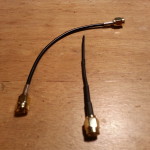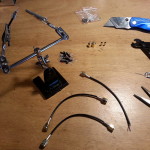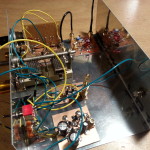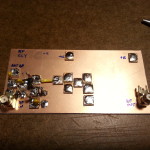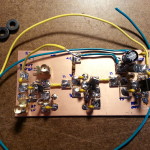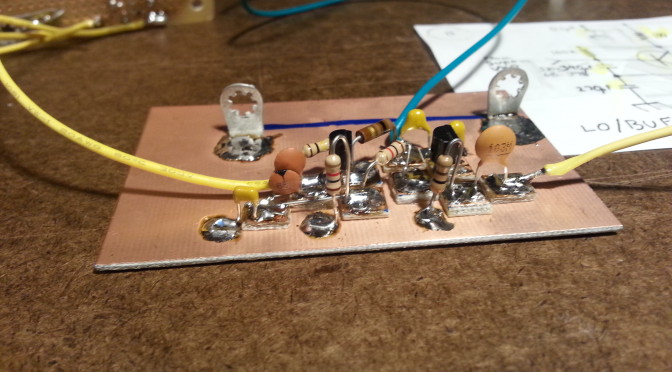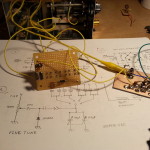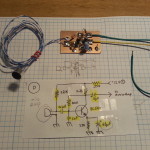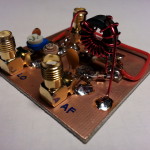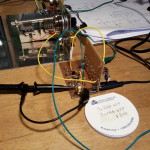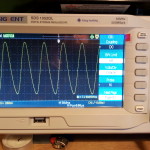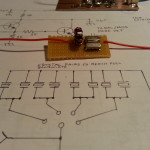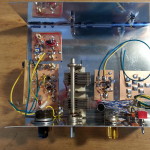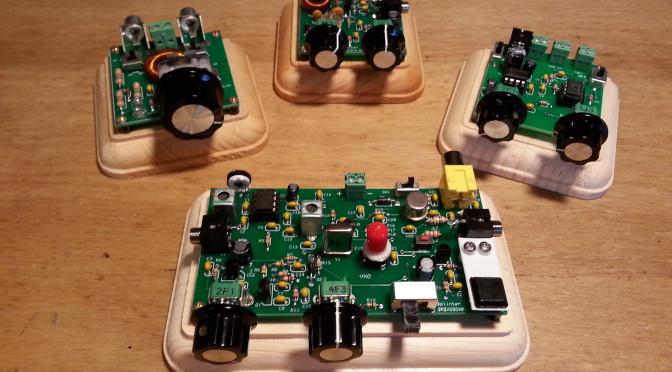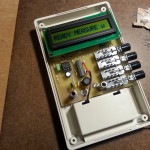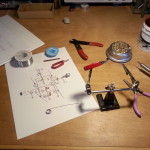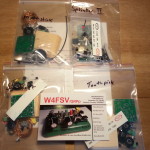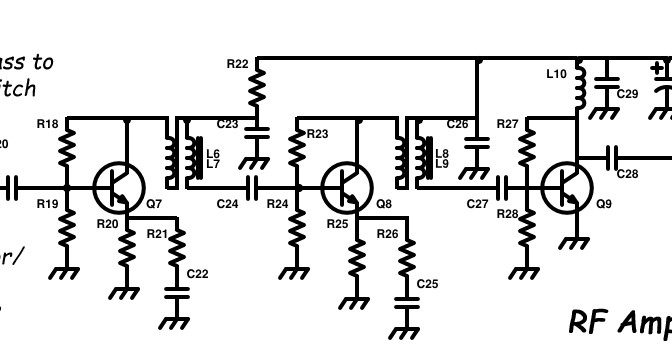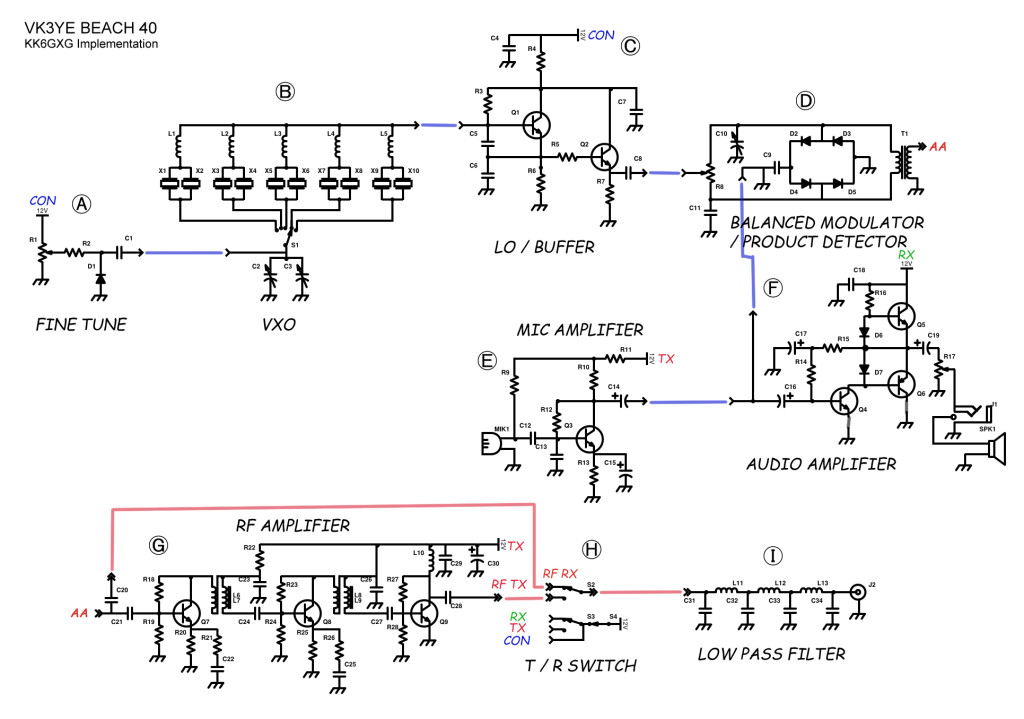Well, sort of…
We are here in Klamath Falls, Oregon now. We started the move July 1st and I was making runs all July. The old place was officially vacated July 31st. August was the slow unpacking of boxes and the beginning of several furniture building projects. I have built 6 bookcases; 2 of them 40 inches tall, the other 4, 70 inches tall.
I still have a number of things to build like the DVD cabinets that will hold our 1000ish movies and TV shows. I also have a lot of storage containers to build, think apothecaries drawers. Lot’s and lot’s of them.
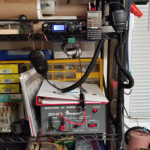 You can see why I haven’t posted in a while. I have made some upgrades to the shack, well the mobile, the shack is looking rather minuscule right now.
You can see why I haven’t posted in a while. I have made some upgrades to the shack, well the mobile, the shack is looking rather minuscule right now.
I have absolutely no bench space for shop stuff or electronics. The station is occupying a puny 1 sq.ft. space across 2 shelves, but, I actually have an HF antenna outside! The MFJ-1982LP endfed is up. The feed point is about 15 feet up on the mast my 2m roll-up J-Pole is attached to and the rest of the antenna is supported by 2 31 foot Jackite poles and 20 feet up into the Ponderosa Pine in our front yard.
So far 80 and 40 meters have been kind. The net controls have had to work me pretty hard, but I have been getting through. I have been heard as far away as Victoria BC Canada, La Jolla California, Somewhere in Wyoming, Utah, and Nevada. Not bad for 5 watts.
The power on the base, my Yaesu FT-817ND, needs a boost now that I am putting together a local NTS Net. I need to make the Local to Section hop on HF more reliably and not make control work so hard. The local net will be on one of the club repeaters.
I have also moved forward by getting involved with a local active club, the Klamath Basin Amateur Radio Association. I have already done two events and a VE session with the club since we got up here. Also in the mix is getting started with the Klamath County CERT program. There is some early work on getting an ARES/RACES group together. All kinds of fun going on.
Once we got up here I started work on the mobile. The Baofeng UV-5RE+ was not cutting it on 2 meters. I upgraded from 5 watts with a crappy little antenna to 25 watts with a QYT KT-9800D dual band mobile radio and an ANLI DC-124H TriBand antenna. Much better performance. Also in the mobile, I installed a Uniden BEARCAT 980SSB Single Sideband CB and a Midland MXT400 GMRS radio. There is hardly any CB traffic up here, but surprisingly, there is quite a bit of GMRS traffic.
For a 2 meter base, I have been using one of the 5 watt handhelds attached to the homebrew 2 meter twin-lead J-Pole I built a while back. Now that I am getting hooked up with CERT, I think I should pull the J-Pole out of the PVC and use it as a portable roll-up. I also need a little more juice for poor weather conditions so a 2 meter base upgrade was in order. Another QYT KT-9800D mobile radio and a Diamond X50A dual-band base antenna should work nicely for VHF/UHF. Those will be incorporated into the station by the end of the week.
As for the HF side of the station… I need to poke around for something around 100 watts, which will require an antenna upgrade too. The MFJ-1982LP is only rated to 30 watts. As long as I keep the power down I should be able to use it for a while. That will still give me a 6 db power gain over the 5 watts I am pushing now. Anything should help. The section nets are on 80 and 40 meters so I will need an antenna that covers at least 10-80 meters. 100 watts should be more than enough for my needs.
Oh, one other thing, I finally got my Skywarn ID number, now I need to find a net for Skywarn. I haven’t found anything in southeastern Oregon yet. I’ll keep looking.
Anyway, that’s the status update for now. Look for an NTS page to be added to the site soon.
73,
~Jon KK6GXG


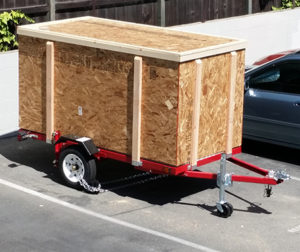 This weekend, June 24-25 is trailer build time, so another Field Day goes by unobserved… Sad about not getting the new FT-817 on the air for FD, but the move takes precedence. The good news for radio is that I have a place to set up a 136′ multi-band horizontal end-fed with the mast just a few feet away from the shack’s new location.
This weekend, June 24-25 is trailer build time, so another Field Day goes by unobserved… Sad about not getting the new FT-817 on the air for FD, but the move takes precedence. The good news for radio is that I have a place to set up a 136′ multi-band horizontal end-fed with the mast just a few feet away from the shack’s new location.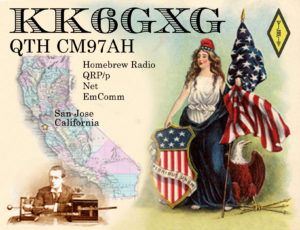

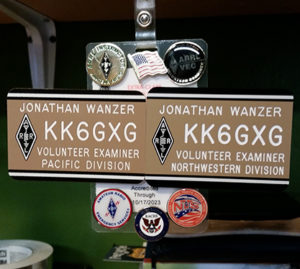 Another early prep purchase was my VE/Callsign tag. Moving to a new Division, I figured I would be a good idea to get a badge with the new division on it.
Another early prep purchase was my VE/Callsign tag. Moving to a new Division, I figured I would be a good idea to get a badge with the new division on it.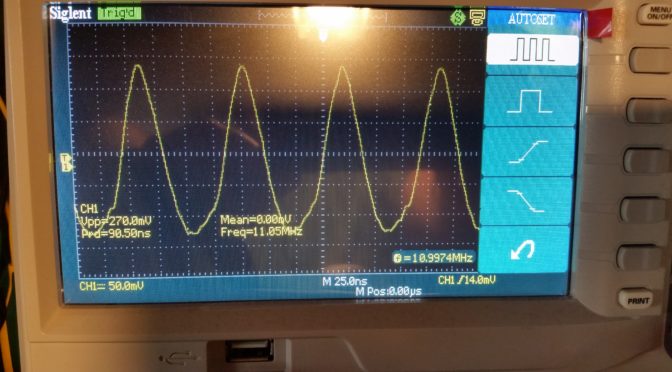
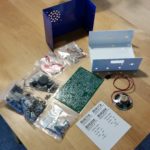 I was fortunate to recently have been gifted a BitX 20 kit by a friend and fellow VE. The kit came from
I was fortunate to recently have been gifted a BitX 20 kit by a friend and fellow VE. The kit came from 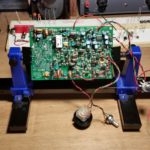 I have the parts waiting for me at Jameco will-call for Monday. Once I get them home, populating the remainder of the circuit board should take about an hour. Then its on to the initial tuning and getting the radio packaged up in its housing.
I have the parts waiting for me at Jameco will-call for Monday. Once I get them home, populating the remainder of the circuit board should take about an hour. Then its on to the initial tuning and getting the radio packaged up in its housing.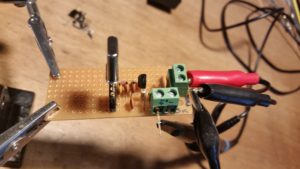 During the BitX build I ran into a small hiccough. The testing at some point calls for the injection of an 11 MHz signal. I would normally use my Lafayette signal generator but for some reason it’s on the fritz so I had to come up with another solution… build an 11 MHz signal generator.
During the BitX build I ran into a small hiccough. The testing at some point calls for the injection of an 11 MHz signal. I would normally use my Lafayette signal generator but for some reason it’s on the fritz so I had to come up with another solution… build an 11 MHz signal generator.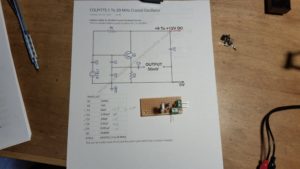
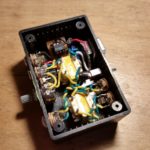 Before I got started on the BitX I was working on getting my Baofeng 2m/70cm HT on digital. I found a couple of designs for a homebrew TNC and set out to make that work.
Before I got started on the BitX I was working on getting my Baofeng 2m/70cm HT on digital. I found a couple of designs for a homebrew TNC and set out to make that work.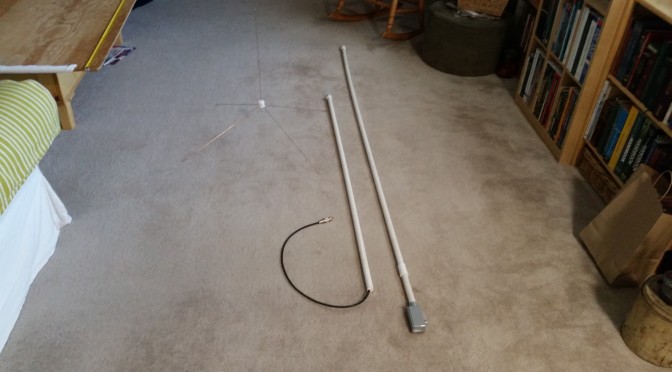
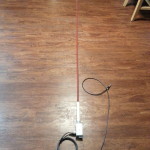
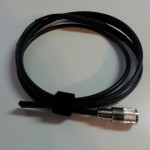
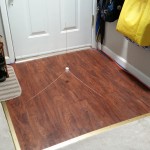
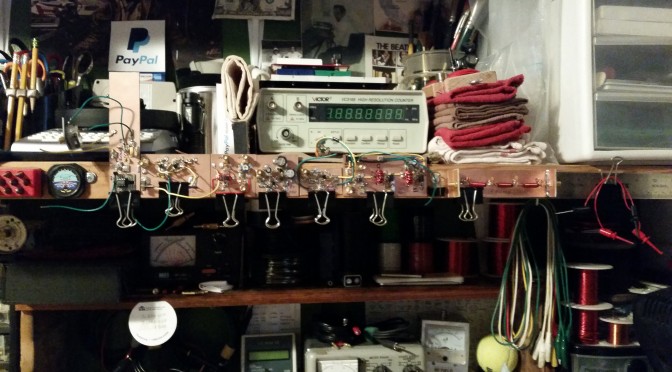
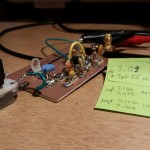
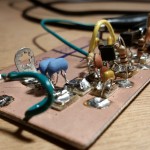
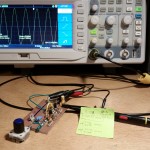
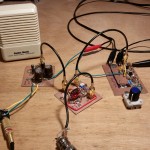
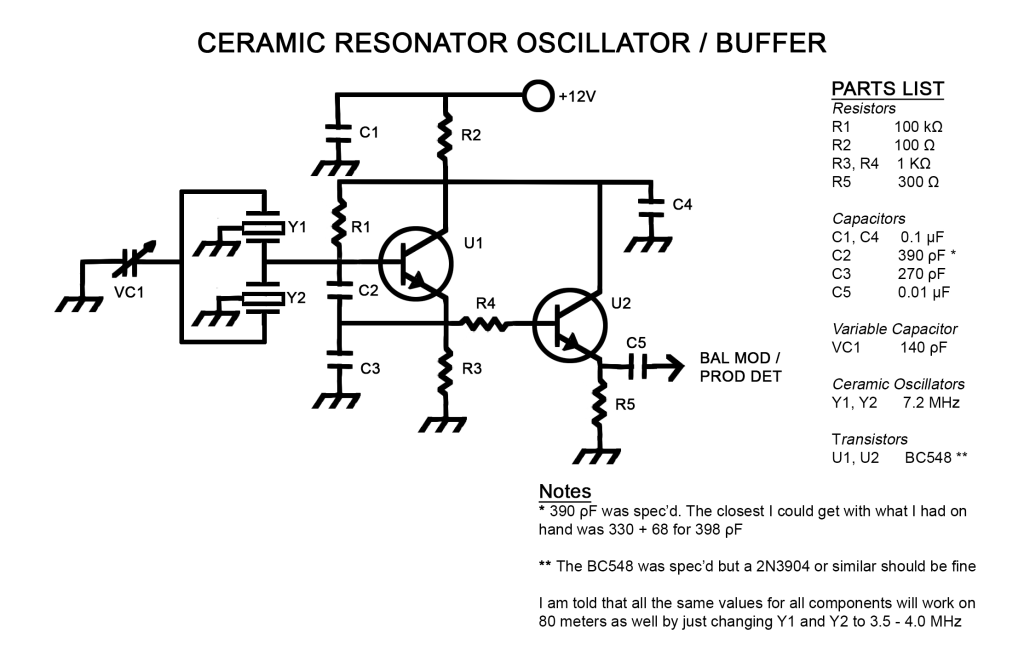
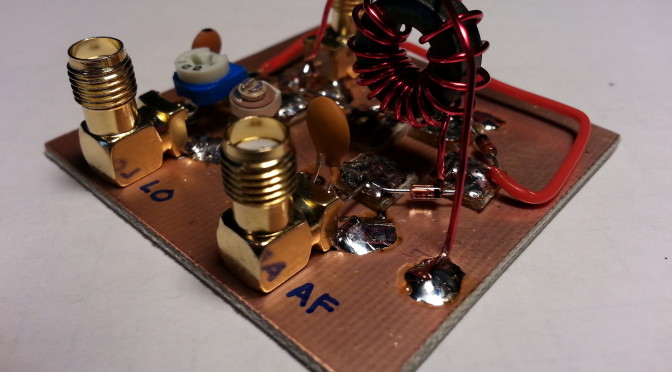
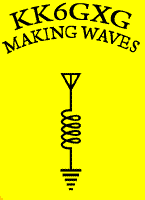 To keep domestic peace I have not been building on the
To keep domestic peace I have not been building on the 